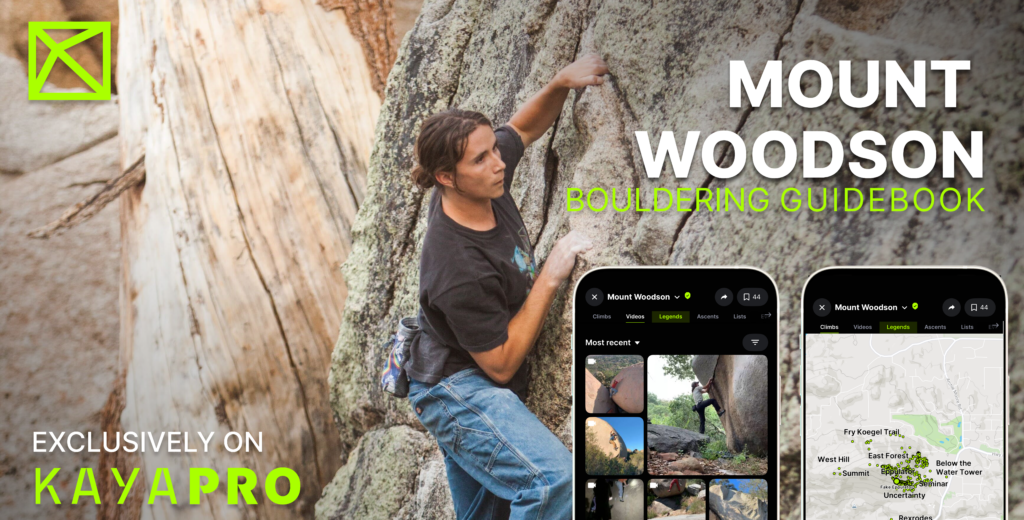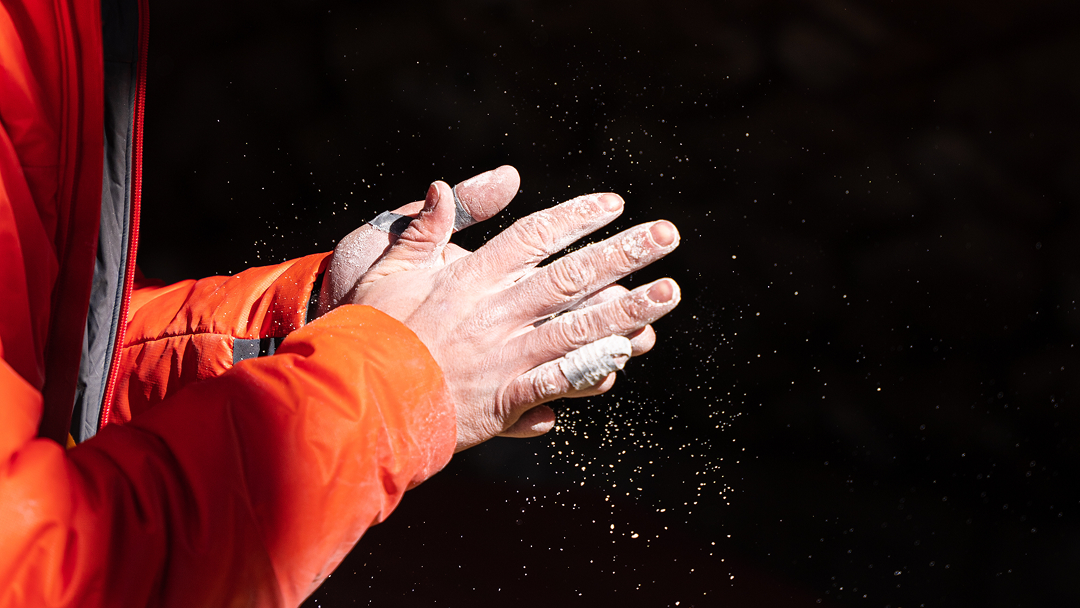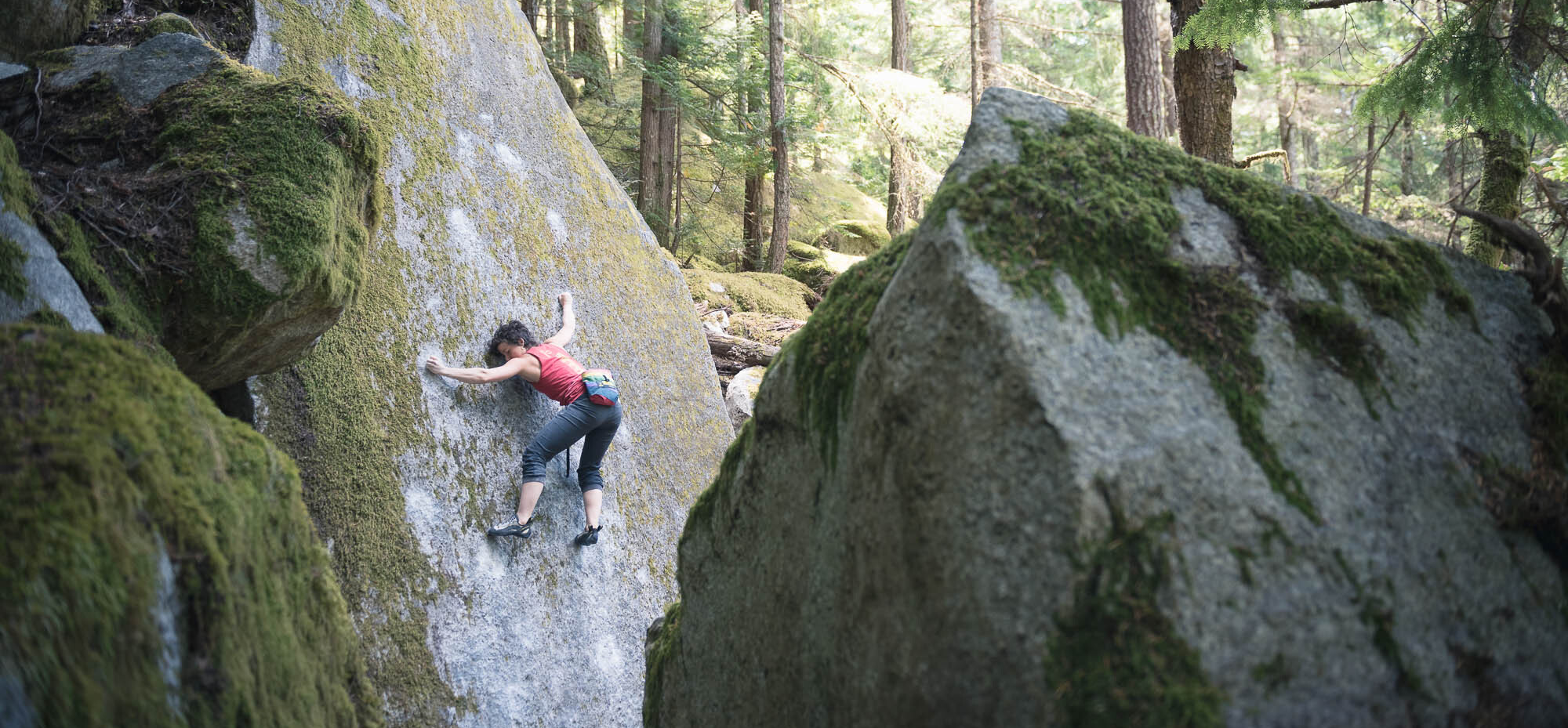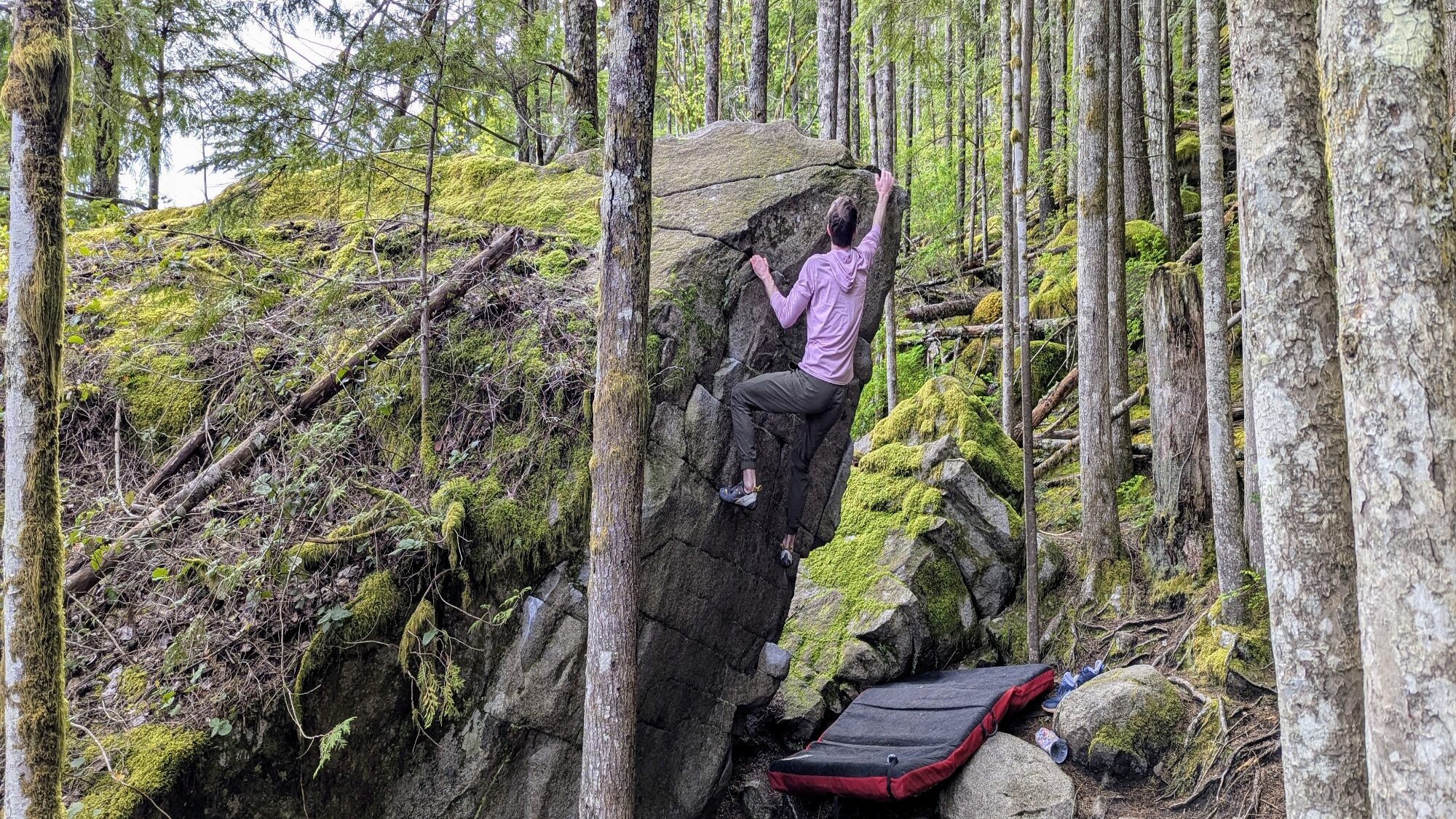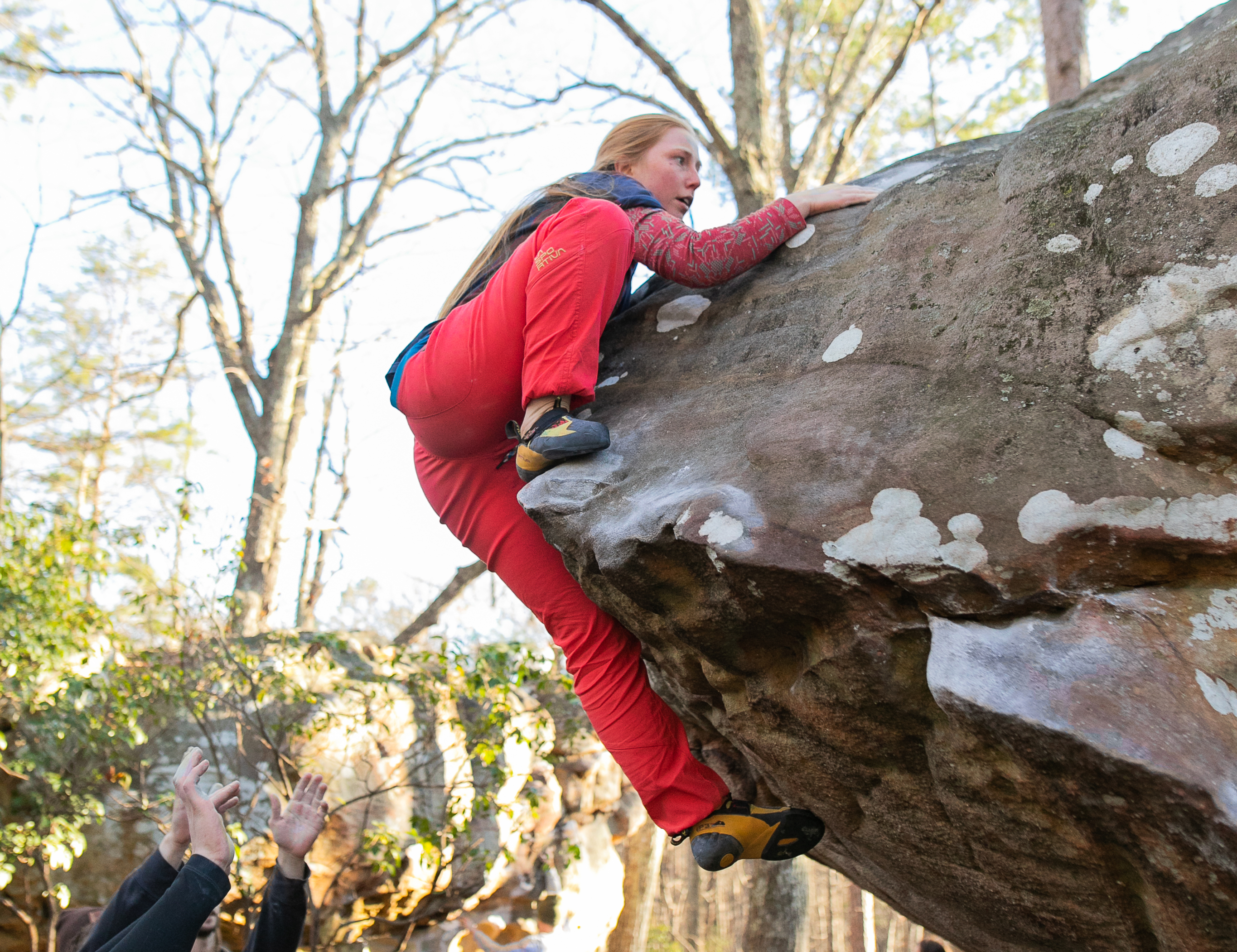Mount Woodson Bouldering Overview
Tucked in the hills east of San Diego, Mount Woodson is a historic granite bouldering area known for its razor-sharp crimps, granite egg-shaped highballs, and old-school testpieces. With hundreds of problems scattered across the hillside, Woodson is ideal for those who love technical slab, finger cracks, and delicate footwork.
You won’t find too many crowds or crash pads lined up in the dirt—this isn’t Bishop. Instead, Woodson is a quiet maze of sunbaked granite domes, scattered along steep trails, with problems that demand patience, precision, and maybe some finger tape. The rock is bullet-hard, and the grades are stout. Woodson was an important early training ground for San Diego climbers, and today, it remains a place to sharpen your technique, reconnect with minimalist climbing, and push yourself on hard problems.
Understanding Mount Woodson Bouldering
History of Mount Woodson Bouldering
Mount Woodson has been a key bouldering zone in Southern California since the 1960s. Known for its technical slabs, cracks, and mantles, it became a go-to training ground for San Diego climbers looking to refine their precision and footwork.
Unlike Yosemite’s big wall culture or Stoney Point’s urban sandstone circuit, Woodson developed a distinct granite style: short but serious problems, often done without pads in the pre-crash pad era. Many problems were soloed or top-roped early on, but they’re now embraced as highballs.
That old-school ethic still defines the area today. Climbers come here to test themselves on sharp crimps, techy footwork, and mentally engaging terrain. Woodson is ideal for those who love granite and subtle movement.
For an in-depth look at the climbing history and development, check out Aden Parker and Tate McFadden’s guide on KAYA.
Rock Type and Climbing Style
Mount Woodson is made of fine-grained granite—sharp, solid, and ultra-technical. The texture is grippy but unforgiving, so bring tough skin, or be prepared for raw skin for the first few days here. The rock rewards patience, so if you like Yosemite-style granite or want to improve your technique, you’ll love it here.
Most of the boulders are in the standard height range, but many ride the line between highball and solo. Falls can be sketchy due to uneven landings or sloped granite slabs, so extra pads and spotters go a long way.
Best Times to Boulder in Mount Woodson
Mount Woodson offers bouldering opportunities throughout the year, but the optimal seasons are spring and fall. During these periods, temperatures are moderate, providing comfortable climbing conditions.
Winter months are also suitable for bouldering, with temperatures often in the 60s and 70s°F. However, there’s a higher chance of rain during this season, so it’s advisable to check the forecast before planning a trip.
Summer can be challenging due to high temperatures and limited shade on the trails. If you choose to climb during summer, aim for early morning sessions to avoid the midday heat.

Essential Areas for Every Skill Level
Mount Woodson has something for everyone—from beginner-friendly slabs to full-value highballs and testpiece finger cracks. Here’s a breakdown of key areas to explore based on your skill level and style:
Beginner-friendly Classics
These areas offer approachable problems with easier landings and shorter heights—perfect for first-timers or warmups.
- Hanging Gardens – A recently developed area with a much more modern and highly featured climbing style.
- Uncertainty – A scattering of boulders close to the trail and sport climbing. Check out Maria’s Groove V1, Bobby Brown Arete V2, and Lemon Chiffon V2.
- Below the Water Tower – Some of the most accessible bouldering at Woodson is found here, and 44 boulders graded V3 and under make this a great area to start at.
No matter what area you choose, rest assured that there will be plenty of beginner-friendly problems to test yourself on. Climbing a large volume of climbs in this grade range is the fastest and best way to quickly improve your technique on this rock type!
Intermediate Classics
Eppulator is one of the most concentrated areas at Woodson, and is home to the most trafficked boulder, Fake Eppulator V7. For an easier version, start on Fake Eppulator and climb up the steep arete for Fake Eppulator Left V4.
If you’re looking to dip a toe into the world of highballs, hike to the Cave area and check out Stairway to Heaven V4 or Pruneface V6 for proud, airy climbing.
Or, if you prefer to stay closer to the pads, Nightcrawler V5 is a lovely lowball that won’t make you wish you’d brought a rope.
Hard Classics
If you’re ready to step it up, these are some problems that define the area’s reputation—thin slabs with barely-there feet, powerful roofs, and old-school highballs that have stood the test of time.
Italian Arrogance V10 – An Enrico Bastriocchi line that climbs out a steep overhang on wild slopey features.
Full Circle V9 has become an area testpiece, offering thin crimps on a typical Woodson bulging face.
Helen of Troy V9– An amazing techy face problem with miserable knobs and balancy movement.
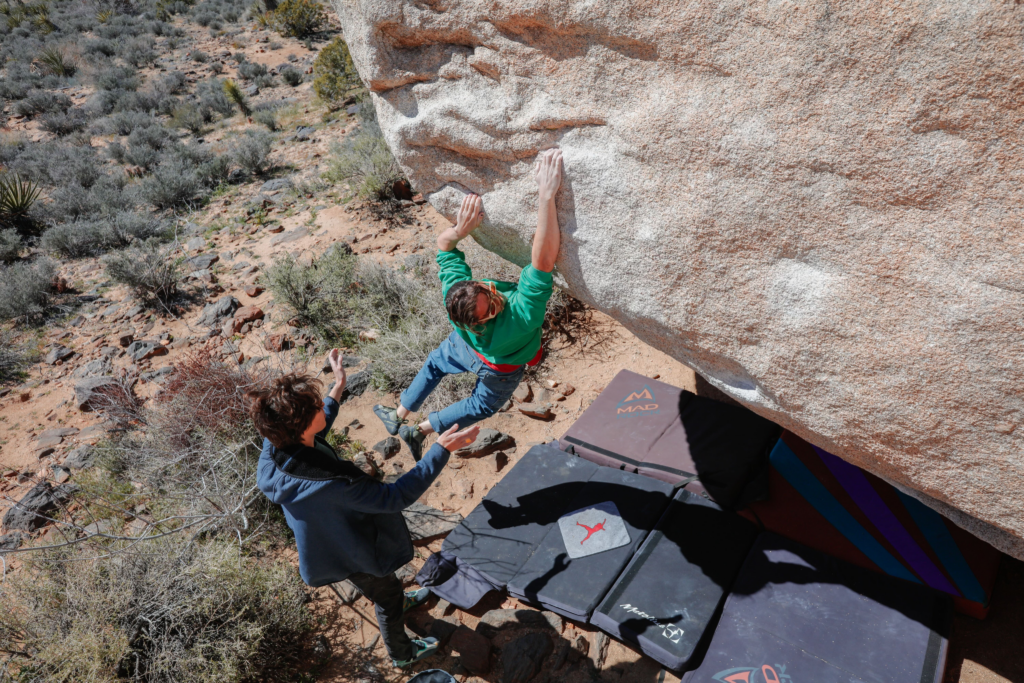
Planning Your First Mount Woodson Bouldering Trip
With hundreds of granite boulders scattered across the hillsides and tucked along trails, it is best to plan ahead. Approach times range from a few minutes to over an hour, depending on where you’re headed—some roadside classics are just steps from the car, while others require hiking and route-finding.
To maximize your day, focus on one or two main zones. Download the GPS guide on KAYA before you head out, since cell service is spotty and the boulders can be hard to navigate without local beta.
Required Gear
Woodson granite is very sharp and textured—perfect for techy climbing, but brutal on your tips. Bring:
- A skin kit with salve and tape
- Precision shoes with good edging for slabs and thin faces
- Multiple pads—landings vary from flat to sketchy slabs
- A brush for cracks and cleaning holds
- Water and sun protection—there’s little shade, and it gets hot fast
Navigation tips
Make sure to download the KAYA guide before you head out. Mount Woodson has no official trail signs for boulders, so climbers must rely on GPS pins and guides. The Fry-Kogel trailhead is the main access point off Highway 67, with a paved fire road that leads up to dozens of zones.
- Main Trailhead: Fry-Kogel Trail (off Hwy 67)
- Closest Town: Ramona, CA
- Parking: Small dirt pullouts—carpool when possible
- Closest Airports: San Diego (50 mins), LA (2.5 hrs)
Safety and Ethics Essentials
- Spotting is crucial. Many problems top out high or have sketchy landings. Have solid spotters who communicate clearly.
- Pad placement matters. Use multiple pads and cover gaps before you start climbing.
- Pack out all trash, including tape, fruit peels, and chalk wrappers.
- Brush off tick marks and holds after each session.
- Stay on established trails—cutting switchbacks leads to erosion.
- Leave No Trace! Pack out trash, clean up after your pets, and minimize climber impact on the environment.
Mount Woodson Bouldering Conclusion
With its sharp granite, technical movement, and rich climbing history, Woodson is the perfect place to level up your footwork, mental focus, and granite game.
Whether you’re climbing on classic slabs or powering through overhangs, the boulders at Woodson offer something unique. Plan ahead, climb with intention, and enjoy exploring one of SoCal’s iconic granite zones.
For GPS maps, problem updates, and ticklists, check out Mount Woodson Bouldering Guide on KAYA!
